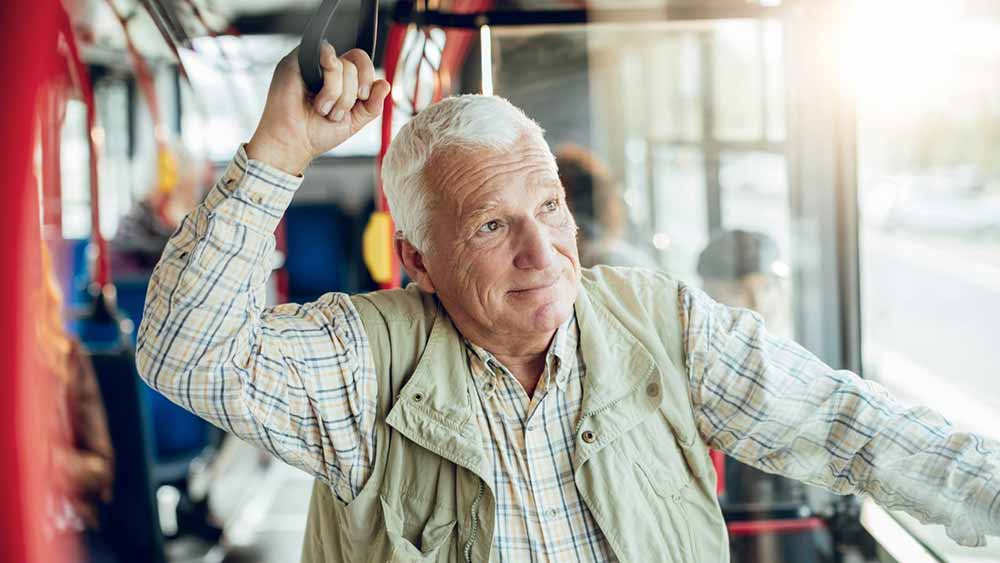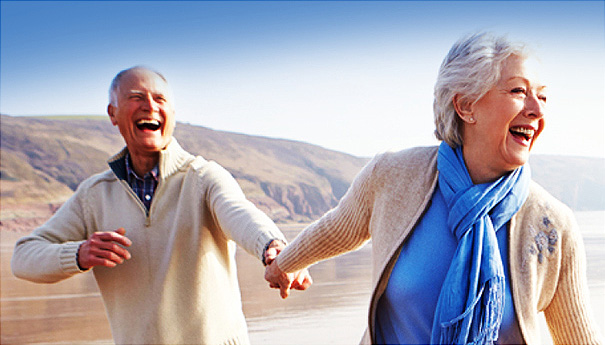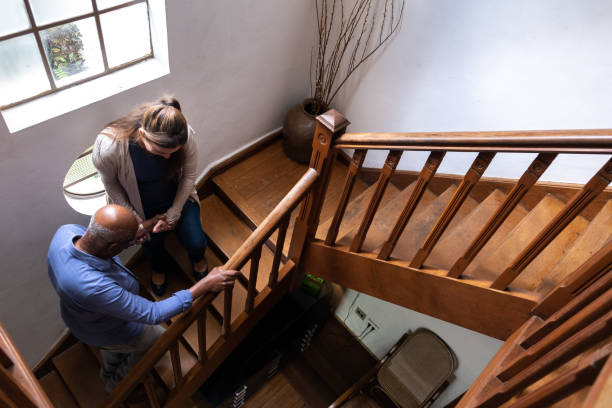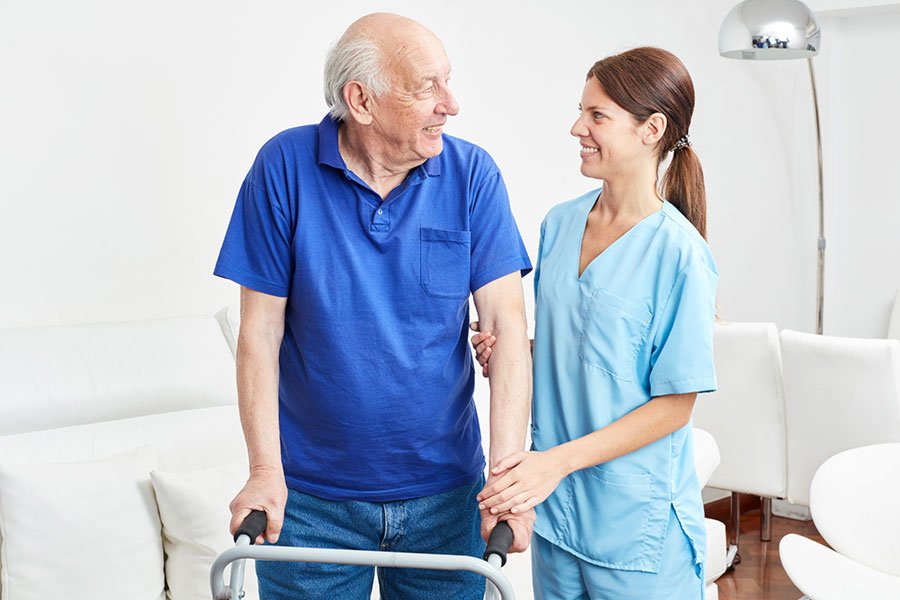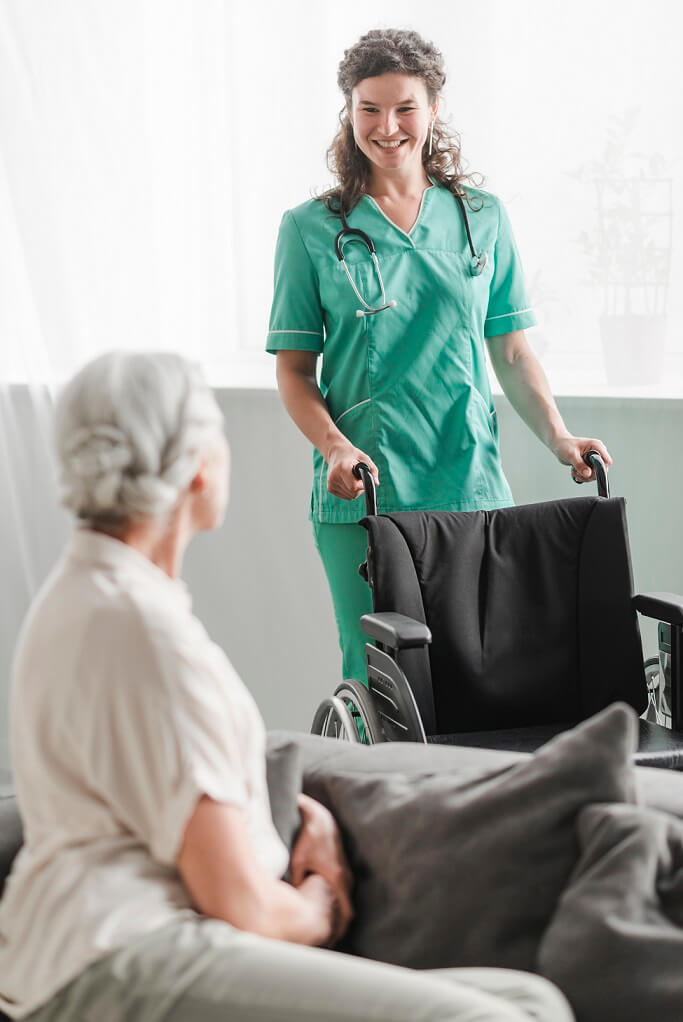Knees and Hips
As the two biggest joints in the human body, your loved one’s knees and hips have had to bear the brunt of a lifetime of physical activity. It’s no surprise, then, that they’re some of the most common complaints among the elderly.
Why do we get knee and hip pain?
The hips are a ball and socket joint, which means they can rotate in multiple different directions. The knees are a hinge joint, and can only move back and forth.
Both rely on muscle, ligaments or cartilage to move smoothly and painlessly. Joint pain is a symptom of the damage done to these components, through years of general wear or by injury, inactivity or excessive exercise. After all, knees take the pressure of 1.5 times the weight of your body with regular walking on even ground, which almost doubles when ascending and descending stairs.
This can manifest itself in multiple different ways, including an inflammation of the sac of skin over the joint (known as bursitis), or eroded and swollen cartilage (arthritis). The good news is there are some measures they can take to ease their pain and speed up the healing process.
How to manage knee and hip pain
For those with severe pain, joint replacements and other medical options have dramatically improved mobility. But to prevention is always preferable to cure, and there are a number of things you can do to care for your joints.
Regular exercise
Contrary to the belief that rest is the best medicine for sore joints, the right kind and amount of exercise can actually prove fundamental for easing soreness or stiffness. There are plenty of exercises and tips to stay healthy out there and it’s worth looking into.
It doesn’t matter if your elderly relative hasn’t had a particularly active lifestyle up to now, or if they’re already experiencing joint pain. It’s never too late to start. The key is simply not to overdo it, and to look into low impact exercise so as not to cause more damage to the joints.
Water aerobics and swimming are perfect examples. The natural resistance of water can allow for more movement than on dry land without putting unnecessary pressure on the joints themselves. And, as a bonus, the warmth of the pool can help soothe any aches and pains.
But if dry land is more your loved one’s cup of tea, yoga and Tai Chi are proven to improve flexibility in joints, as well as one’s overall balance. This is particularly important as it’ll serve to limit the risk of future falls and accidents when your loved one is up and about.
Many local gyms and recreation centres offer classes specifically designed for older people, but if not, it might still be worth enquiring if they can cater for your loved one in their regular classes. Many elderly people are welcome to take part in such activities, and instructors are usually happy to accommodate varying levels of ability.
The most important thing is that they listen to their body. When they feel too much tightness in their muscles, it’s time to stop. Heat is beneficial before exercise because it allows for increased muscle flexibility, while ice is best applied after a workout, to prevent inflammation.
Even if your loved one doesn’t want to get involved in organised classes to stay fit and healthy, they may find simply waking to the shops or up and down stairs can make all the difference. Whatever it is they choose to do, they should aim to be active for at least half an hour a day, five days a week. This will help keep their weight down (which can put extra pressure on joints), as well as keep muscles and bones strong.
Consult a medical professional on how best to do build up slowly, rather than pushing the body into too much, too quickly. The objective of physical therapy is also to increase both the range of motion in the joint, and the muscle which gives it the joint the quality of support it requires. You might find your elderly relatives are a little resistant to suggestions of exercise, but over time, exercising will get easier.
Exercise is just one part of a healthy lifestyle. Diet and hydration are just as essential – not only for the best results within the body, but to make training more efficient.
No matter how much your loved one looks after their own body to reduce the risk of falls and broken bones, accidents may still occur. To cover all ground, look into home safety for the eldery for some great tips on how to reduce accidents at home. Make bathrooms safe for the elderly, especially, will be a high priority as this is where a lot of slips can occur.
If your loved one lives in a house with more than one floor, look into how to make stairs safe for older people too. If implementing specialist modifications in your relatives home to help them stay independent for longer are not your forte, invest in the help of a Home Improvement Agency for any alterations or adaptations.
Diet
It goes without saying that a balanced and wholesome diet is essential for overall health – as well as reducing the risk of high cholesterol, and protecting the joints.
But the more you weigh, the more your bones and joints are put to work. And that’s just the start: there are lots of nutrients your bones and joints need for their repair and development, and without them, your loved one will struggle even more.
Supplements and vitamins for these nutrients are readily available in pill form, but your elderly relative may already be taking a number of medications and not want to add more pills to their rota. Fortunately, it’s easier than ever to find healthy, nutritious sources of everything your loved one needs.
- Calcium is the mineral in bone which causes its rigidity and hardness. Sources include dairy products, soya milk, tofu, sardines, salmon, figs, beans, broccoli, tinned tomatoes, dried apricots, oranges, almonds and brazil nuts. If your loved one is dairy free, make sure they get their calcium intake from elsewhere
- Vitamin D assists the body with calcium absorption. It can be found in fatty fish – tuna, salmon and mackerel – eggs, portobello mushrooms, beef liver, cod liver oil and cheese
- Vitamin K facilitates the production of a protein necessary for the making of bone. Good sources include Brussels sprouts, kale, spinach, cabbage, spring onions and prunes
- Protein is good for muscles, and can be found in meats, fish, nuts, beans, chickpeas, peas, soybeans and lentils.
If your loved one is on Warfarin (a widely prescribed anticoagulant), be aware that the consumption of too much vitamin K can make the drug less effective in preventing blood clots. If in doubt, always consult a doctor.
Anti-inflammatory foods can help with conditions where the tissue around the joints becomes inflamed, such as arthritis and bursitis. Some good examples include:
- Potatoes and sweet potatoes
- Coconut milk
- Salmon
- Kale and spinach
- Nuts
Above all, a healthy diet is all about eating on a frequent basis. If the body isn’t getting enough food, it will store fat to keep from starving and will cause weight loss. It’s not good for your loved one to dramatically cut down on food intake. This is more common than you’d think when someone lives alone or has difficulty preparing meals or shopping for themselves. Proper nutrition is a medicine in and of itself.
The RICE strategy
According to a report by AgeUK, an elderly person who has a fall has a 50 percent chance of suffering from some degree of mobility problem.
If your loved one has a fall, there’s a simple procedure you can follow before seeking medical attention. It’s called the RICE strategy, and it goes as follows:
- Rest: Try to keep from aggravating the injury further by giving it some time to heal. Keep the injured area still and comfortable while you continue with the procedure.
- Ice: This helps reduce swelling and ease the pain (though it is ineffective on deep hip injuries). Wrap ice cubes in a kitchen towel, and apply them to the injured area for 20 minutes at a time, with equal breaks in between to avoid frostbite.
- Compression: This works alongside icing to reduce swelling. Wrap up the injury with a bandage tight enough to provide support, but not so tight you reduce blood flow to the area.
- Elevation: This will prevent blood from gathering and causing further pain. Elevate the injured area by propping the knee or ankle up on pillows, if possible, above the level of the heart.
Once the swelling has gone done, the next step is to apply heat. This will ease stiffness and bring some flexibility back to the muscle. Simply by immersing the area in warm bathwater, or apply a hot towel to the affected area, for half an hour intervals throughout the day.
Mobility aids
Your loved one’s doctor might recommend mobility aids to improve daily living, such as a cane or a walking frame to take some of the weight off their knees and hips.
They can help to prevent falls and injuries, as well as increase mobility and stability on existing injuries. They are a temporary aid to improve and sustain mobility rather than a permanent fixture.

